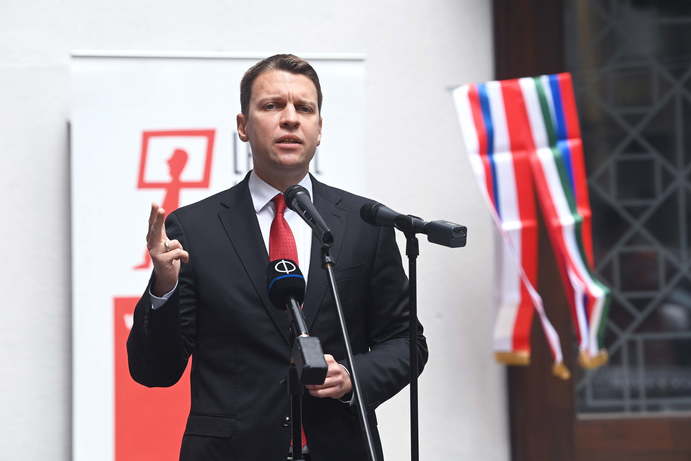By UME
The Visegrád Group (V4) is the strongest alliance in the European Union today, not only politically but increasingly also economically, said Tamás Menczer, State Secretary for Information and International Public Relations in the Ministry of Foreign Affairs and Trade of the Hungarian Foreign Ministry, on Wednesday Budapest.
He emphasized that the Visegrád Group today stands above all for common sense, unity, and strength, as well as for a new beginning in Europe after the epidemic situation. Common sense was most evident in managing migration when the V4 said they do not want mixed societies and pointed out the dangers of terrorism and the health threats posed by migration.
“We want a Europe in which cooperation is based on mutual respect and strong nation-states.”
– said the Minister of State at the inauguration of the mural on Klauzál Street on the occasion of the 30th anniversary of the founding of V4, consisting of Hungary, the Czech Republic, Poland, and Slovakia.
Hungary has continued one of the most successful control efforts in Europe, in which it has also worked with the V4 to restart the fight against the epidemic. This enabled the country to start a new life and economy earlier, ”said Tamás Menczer.
Today is the last day of the Polish Presidency of the Visegrád Group, and the Hungarian Presidency begins on Thursday, said Polish Ambassador to Hungary Jerzy Snopek at the unveiling of the mural:
Poland has had a successful but difficult presidency and Hungary can hopefully lead the V4 in a more favorable epidemiological situation.
The diplomat said that the V4’s cooperation is based on cohesion and synergy, integration, and sovereignty. The countries of the group should be linked not only by interests but also by the need to preserve common values, warned the ambassador:
The V4 is still not aiming for a Visegrad superstate, but for an amalgamation of sovereign states with equal rights.
Péter Fekete, State Secretary for Culture, said that during the Hungarian Presidency, the V4 will discuss the cultural innovations created by the epidemic at a joint conference at the Hungarian National Museum.
Source: Magyar Nemzet

